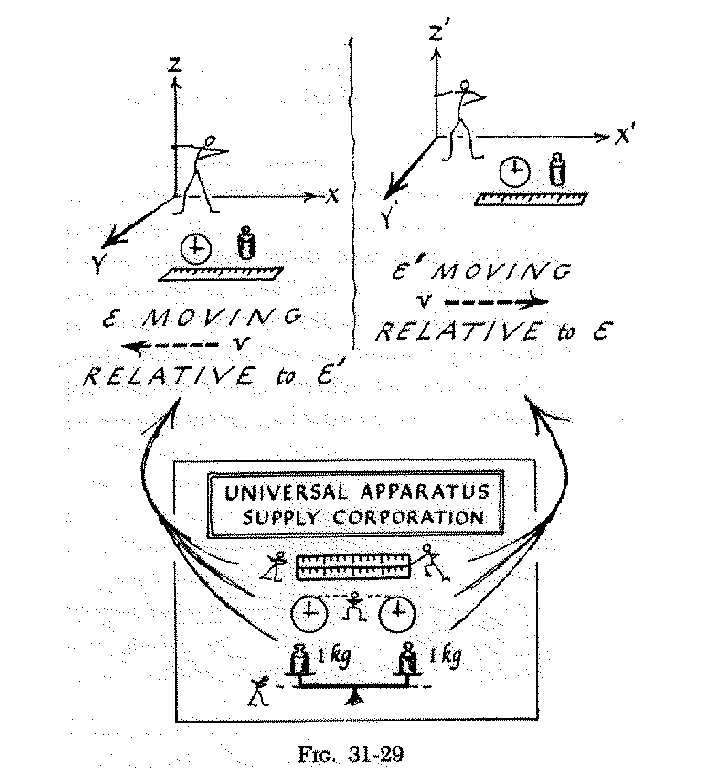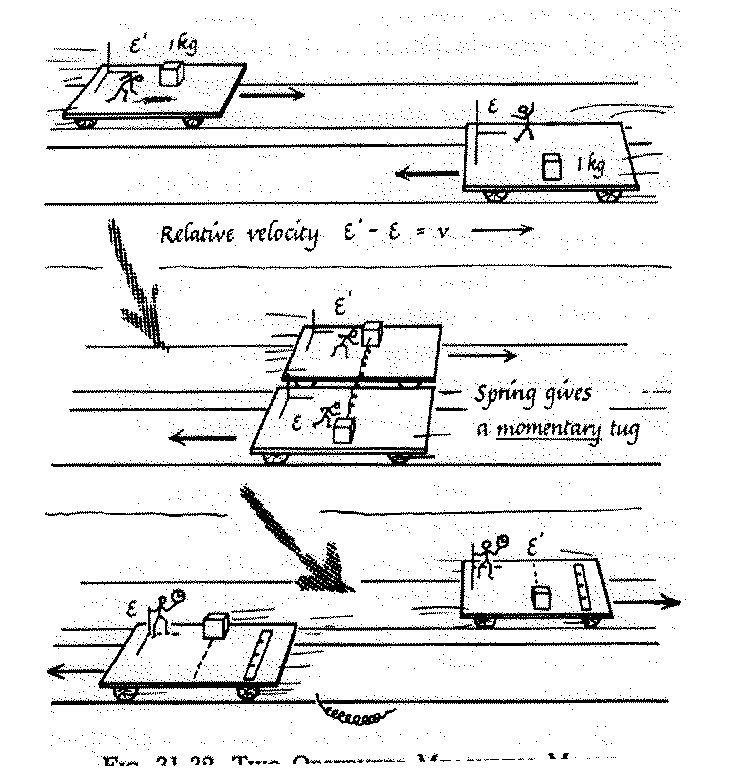

| Both observers have identical measuring equipment: Two meter bars, one for the direction of movement (x), one for the orthogonal direction (y), a kilogram, and a clock. | 
| |
| A thinks B's clock is slow | B thinks A's clock is slow | |
| A thinks B's meter (x) is short | B thinks A's meter (x) is short | |
| A thinks B's meter (y) is correct | B thinks A's meter(y) is correct |
| A measures vA | B measures vB | |
| A sees Bīs measurement of vB | B sees A's measurement of vA | |
| Both observers find vA = vB | ||
| A thinks B's clock is slow | B thinks A's clock is slow | |
| A thinks vB < vA | B thinks vA < vB | |
| Both observers know pA = -pB mvA = -mvB Thus: | ||
| A thinks B's kg is heavy | B thinks A's kg is heavy | |
| By how much? (1 -v2 / c2 ) 1/2 ! (What else?) | ||
